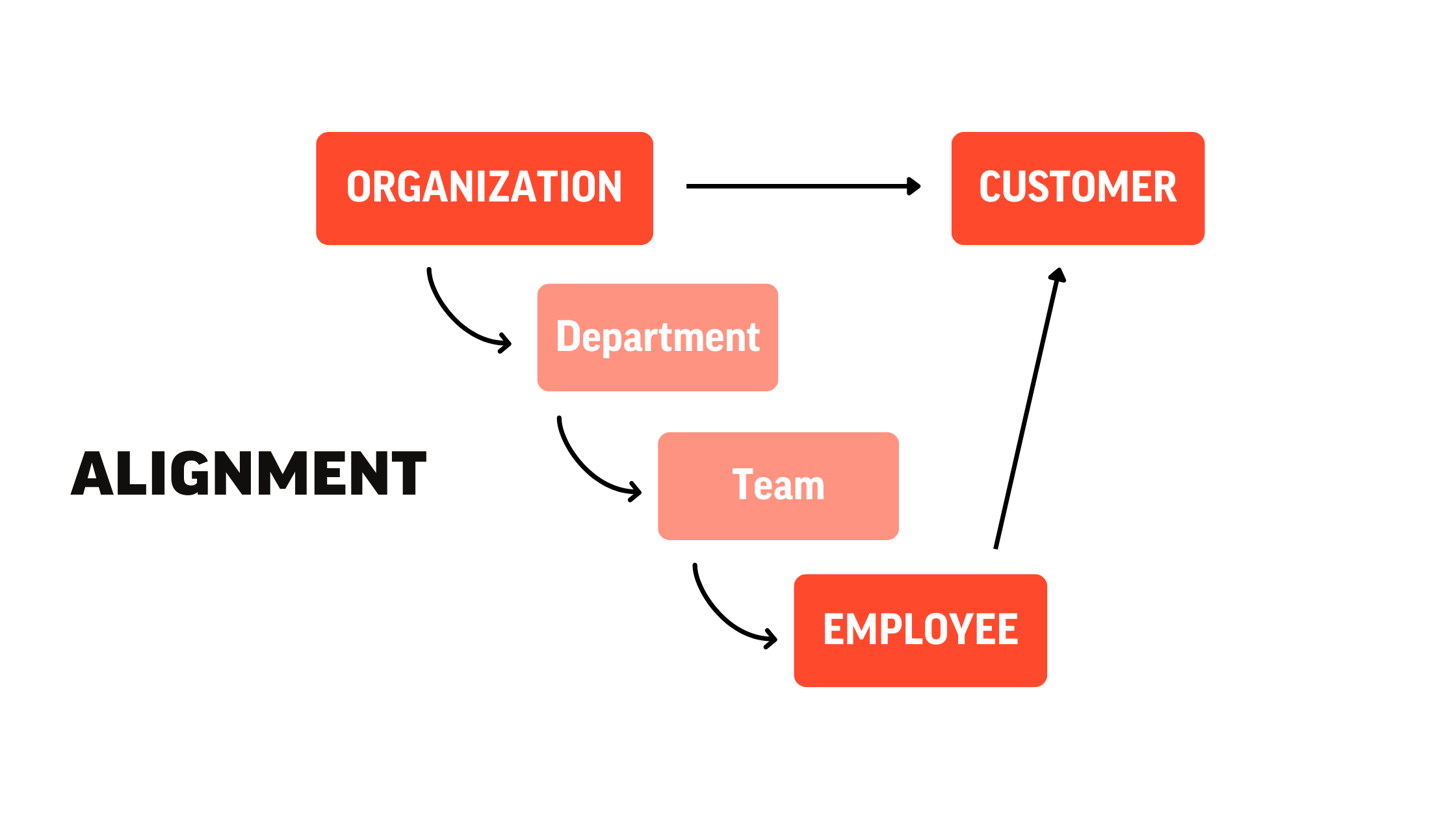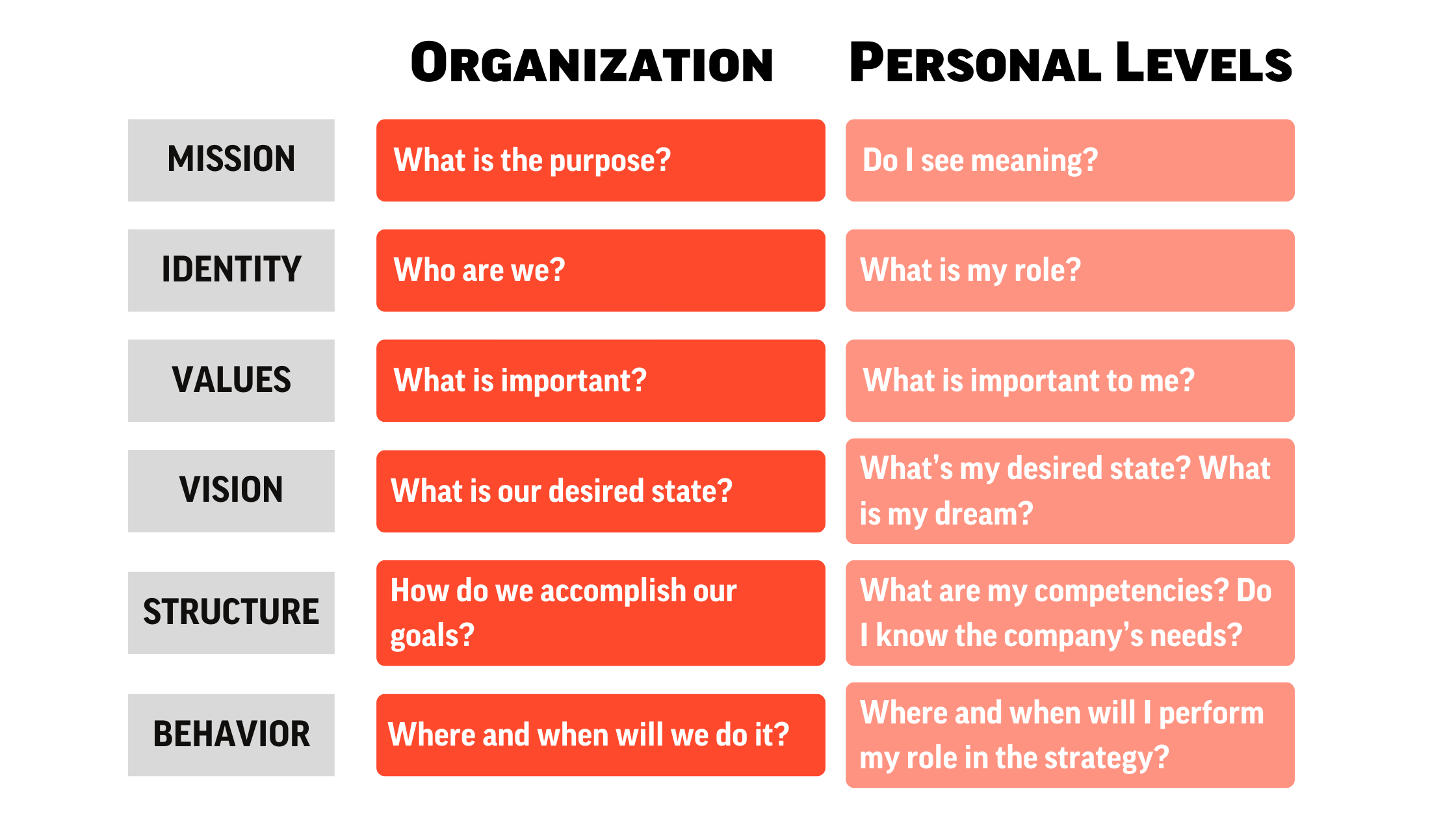What Is Strategic Alignment?

Strategic alignment is the assurance that the whole organization is working toward a common goal—the vision!
Strategic Alignment requires two things:
- All team members must be aligned with the organization's mission, values, and vision.
- The organization’s structure, resources, and culture must support the strategy. This is strategic alignment!
An example is the United Nations’ Environmental, Social and Governance guidelines (ESG). KPMG reports that businesses not taking ESG seriously are beginning to lose customers, employees, and financing, and that they will eventually become unviable.
All elements of the organization—divisions, departments, teams, and employees—require a common understanding of the company’s mission, values, vision, and strategy. When team members can align their professional goals with the organization’s goals and strategy, morale improves.
Strategically aligned organizations
A strategically aligned organization is more adaptable to the ever-changing business environment, achieving better results with less effort. Aligned organizations have a winning culture. It’s hard work to create a culture where individual values match organizational values, where the focus is on trust, high energy level, motivation, and success in all business units and among all employees.
The better the strategic alignment, the stronger the culture. The ultimate goal is alignment with the customer.

Why optimal strategic alignment is important
Employees become more effective and satisfied when they can see meaning in their work and that they are making a difference. This clearly happens when they understand how their work links to the company's strategy and when the strategic alignment is in place (structure, resources, and culture). It means less wasted resources because employees focus on efficiency and simultaneously increase their performance.
Employees will have their focus on getting things done because there is clarity around who holds the decision rights and who needs to be consulted when making decisions. It means quicker decisions and less time for execution. Instead of waiting to be told what to do or for permission to act, employees know their role and know when to make decisions on their own. And when roles and competencies are clear, the leaders can use the employee’s skills optimally. With better visibility, everyone knows what resources exist in the organization, so there is less duplication and more collaboration meaning that everyone focuses on better performance and productivity.
Ultimately, strategic alignment enhances an organization’s ability to deliver on its brand promise. Customers get what they’re promised because team members understand their expectations and which products and services the company has promised the customer. That’s customer alignment!
How to create strategic alignment
Systems don’t align—individuals do.
Some managers think strategic alignment is just window dressing. This is because they don’t understand the real nature of alignment. But even when they know alignment leads to a winning performance, they might focus too narrowly on a lack of resources, for example, and miss the bigger picture. This can be a costly mistake.
Strategic alignment between an organization and its workers requires time and attention, so some managers choose the easy way out. They may post a shortened version of the company’s goals on the bulletin board in the canteen. We call this the four P's process: Print, Post, Preach, and Pray that all employees will read it, understand it, and feel a part of the company’s ambition. The success rate of this approach is dismal.

People are driven by their own goals. If their professional goals are in alignment with the organization’s goals, team members become more motivated and engaged. If they’re given the responsibility to make decisions at their level, even better!
When hiring, it’s important to secure alignment not only with the job functions, but more importantly with the organization’s values. Job seekers might read the company's home page, tailor their resume, and rehearse answers, which confuses the issue. An assessment test is often in order.
And finally, subcontractors might come from an organization with a different culture and values than your company’s. If their position includes customer contact, they’re the face of your organization and must present themselves as aligning with the organization’s values.
The finest team can’t meet its potential if everyone isn’t working toward the same objective. But even a new and untried team will accomplish much if they understand what, why, when, and how they’re expected to contribute. That kind of team becomes greater than the sum of its parts, and is an inestimable asset to the company.
Strategic alignment assures that the organization’s structure, resources, and culture support the strategy. The greater the alignment in your organization, the greater the opportunities for success!
Still wondering how you can align your whole organization in a seamless way? DecideAct’s software is the right solution you’re looking for. Book a free meeting today, and tomorrow you can start organizing your departments to see results.










